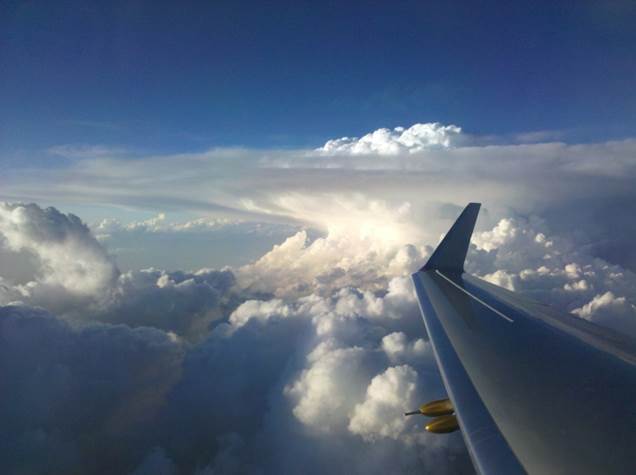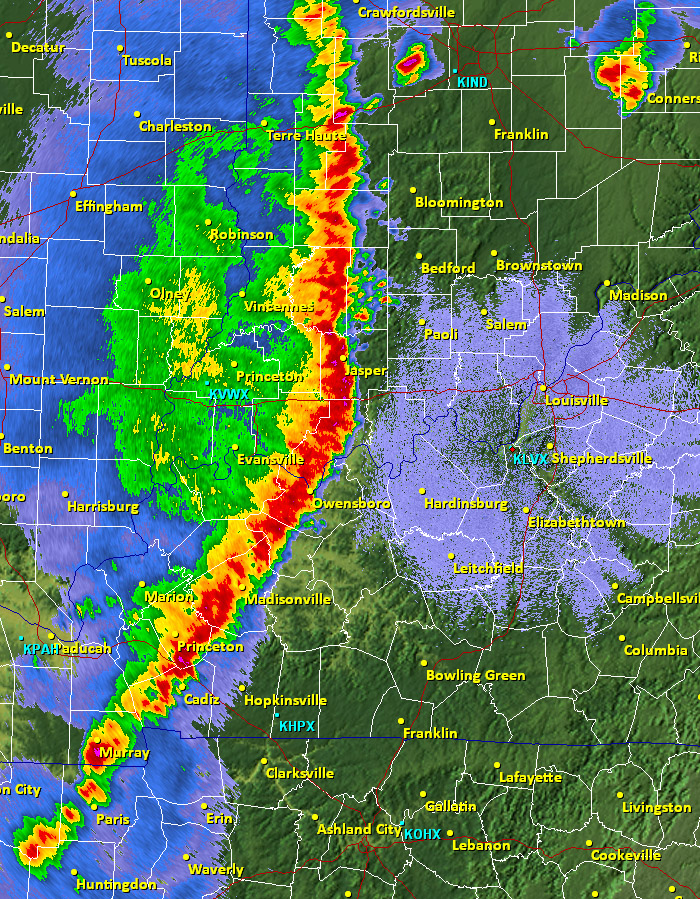
High winds and very dry conditions will bring extremely critical fire weather over a large part of New Mexico today. Red Flag and High Wind Warnings have been issued. Isolated to scattered severe thunderstorms may produce large to very large hail and localized damaging winds late this afternoon into evening from the eastern Central Plains to the Upper Midwest. Read More >
| Return to Safety Homepage |
Thunderstorms

Three ingredients are needed for thunderstorms to occur: Moisture, Instability, and Lift.
Moisture can come from any nearby body of water, or by moist ground conditions.
Instability occurs when air pockets rise faster than the environment around them.
Lift can be achieved by a frontal passage, thermals, and/or convergence.
Thunderstorms can produce several hazards to aviation. These include, but are not limited to:
- Lightning
- Large hail
- Turbulence
- Icing
- Tornadoes
- Downbursts
Often, multiple hazards can develop quickly. As a result, pilots should avoid flying in or near thunderstorms.
 |
Lightning is actually not as much of a hazard to aviation as people think it is, because aircraft are equipped with static discharge arrestors. In fact, very few crashes have occurred due to lightning striking an aircraft. Still, it is important to know that a plane does not need to be in or right near a thunderstorm for lightning to occur. Lightning can come out of the anvil and strike an object several miles away. |
 |
Hail occurs when chunks of ice develop from strong thunderstorm updrafts reaching above the freezing level. When hail becomes too large and heavy for the updraft to support it, it falls to the ground. Once the hailstone falls below the freezing level, it begins to melt. If it is substantially large, it will remain mostly intact by the time it reaches the ground. Hail is much larger in the thunderstorm cloud than the ground, which can produce a major hazard to aircraft. |
 |
Turbulence can occur above a developing thunderstorm, or in the vicinity of a thunderstorm due to the rapid velocity of the updraft. Oftentimes, severe to extreme turbulence is reported near thunderstorms. Turbulence has been known to occur several hundred miles downstream, so it is wise to give them plenty of distance, especially at higher flight levels. |
 |
Icing can occur in the mid to upper levels of a thunderstorm. Because of the strong updrafts and abundant moisture, moderate to severe icing with large drops can occur rapidly within a thunderstorm. |
|
|
Tornadoes, which are violently rotating columns of air below a thunderstorm base, can be hazardous not only near the ground, but also aloft. This is because the tornadic circulation can extend well up into the thunderstorm cloud. |
 |
Downbursts occur beneath the base of a thunderstorm when rain and rain-cooled air drops rapidly down to the ground. When it reaches the ground, it spreads out violently in all directions, causing localized vortices and wind shear to develop. This is especially hazardous to aircraft because a plane may experience lift at one moment, followed by rapid descent during the next. |
Thunderstorm Life Cycle

Thunderstorm Types
 |
Airmass thunderstorms, often called "popcorn" or pulse-type storms occur most often during the mid-late summer. They usually have a lifetime of about 30 minutes and don't move much. As a result, they can be easily avoided. However, they can produced localized downbursts and occasionally, large hail. |  |
 |
Multi-cell clusters occur when a cluster of airmass cells dissipate and spawn new cells nearby or adjacent to their location. Individual cells can last 20-30 minutes, but the entire cluster can last for several hours as long as new cells develop. Oftentimes, these can block major airways or intersections and should be avoided. These often produce locally strong wind gusts and severe-extreme turbulence at altitude. |  |
 |
Multi-cell lines (also known as squall lines) can span hundreds of miles and effectively block airways. They can last for several hours and move rapidly. These can produce strong downbursts with LLWS and severe-extreme turbulence. Sometimes a thunderstorm line will appear to have breaks in and look safe to fly through. However, these breaks can fill in rapidly, and have been responsible for numerous aircraft accidents. If a squall line is blocking a pilot's flight path, it is advised that they alter their route or land and allow the storm to pass. |  |
 |
Supercells are most common in the spring or fall, but can occur during the winter in the southeastern US. They typically last four to six hours and produce large tornadoes, hail, and damaging downbursts. Although they are known as the king of thunderstorms, pilots can usually deviate around these storms if they are spread out. However, several supercells that are close to each other can eventually merge into a squall line. |  |
Turbulence |
Thunderstorms |
Icing |
Ceiling and Visibility |
LLWS |
Density Altitude |